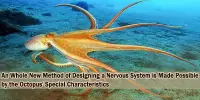Dr. Celia Schunter of the School of Biological Sciences (Ecology and Biodiversity) & The Swire Institute of Marine Science, The University of Hong Kong (HKU), in collaboration with researchers from The University of Adelaide, James Cook University in Australia, IRD Institute in New Caledonia, and Okinawa Institute of Science and Technology Graduate University in Japan, led a research team that discovered the basis for variability across different fish species and discovered that some species evolve more quickly, providing them with evolved molecular toolkits and allowing them to cope with future ocean acidification. The study was recently published in the journal Global Change Biology.
With the continued uptake of anthropogenic atmospheric CO2 by the oceans, a process known as ocean acidification (OA), global ocean surface pH is expected to decrease. Predicted OA circumstances influence several marine fishes’ physiological performance, growth, survival, and important behaviors for the fish’s survival, according to a decade of laboratory tests.
Researchers went to a remote part of the planet to study in situ exposure to elevated partial pressures of carbon dioxide (pCO2, the amount of carbon dioxide dissolved in water) in order to predict how wild fish will cope with these environmental conditions predicted to exist around the world by the end of this century.
With rapidly changing habitats as a result of human activities, it is critical to be able to forecast what will happen to marine creatures, particularly fish populations, in order to maximize our conservation and management efforts.
According to the findings, some fish species that evolve at a faster rate may have a more flexible manner of dealing with OA, which could assist these species retain their population size and variety. However, once the OA level exceeds their tolerance levels, OA will be tough for some other species that are growing slowly.
Natural laboratories with elevated pCO2
CO2 seeps from volcanoes can be utilized as natural laboratories, where CO2 rises from the substratum and acidifies the surrounding seawater to levels similar to, or occasionally exceeding, the forecasts for ocean acidification by the end of the century.
It has been quite puzzling why some species struggle more than others with ocean acidification conditions. Our expedition to this remote CO2 vent site allowed us to look at many fish species that live naturally in these elevated CO2 conditions and complete parts of the puzzle. We see that possibly limited by slow evolution, some fish species may not be flexible when responding to elevated CO2 conditions and struggle more.
Dr. Celia Schunter
Six adult coral reef fish species, including damselfishes and cardinalfish, were sampled, tissues were extracted, analyzed, and sequenced for their cellular response to elevated CO2 in their brains from a reef within the Upa-Upasina CO2 seep in Papua New Guinea (pH 7.77, pCO2 846 µatm) and an adjacent reef (500 m distance) with ambient pCO2 (pH 8.01, pCO2 443 µatm).
The six fish species studied are common coral reef fish with slightly varying ecologies, such as changes in parental care and whether they are active during the day or night, so we can extrapolate the trends identified to other fishes to some extent.
Common responses to OA across species
Elevated pCO2 induced common molecular responses related to circadian rhythm and the immune system in various species, indicating that these are significant processes that are influenced by elevated CO2.
Circadian rhythms govern our 24-hour biological clocks and can be found in humans, animals, and plants. They control our sleep patterns as well as our metabolism, indicating that the circadian rhythm core genes influence a wide range of downstream activities as well as our behavior.
With increased CO2, the Circadian genes seemed to trigger gene expression changes in other genes in the brain, allowing the fish to react more flexibly to the CO2.
Immune modulation appears to be an additional essential function in the response to high CO2. Surprisingly, while this was true for a variety of reef fish species, nocturnal species showed an increase in immune genes, whereas other species had immune genes suppressed by high CO2.
This is a phenomenon that hasn’t been studied before, and it suggests that nocturnal and diurnal animals may react differently, which calls for more research.
A fish species possessing evolved molecular toolkits to cope with future OA
To response to the high pCO2 at the CO2 seep, the spiny damselfish, A. polyacanthus, may alter the pH levels within its cells through gene expression modifications.
We initially assumed that an increase in pCO2 to end-of-century predictions would have little impact on fish because they know how to regulate pH. However, we discovered that these coral fish species, particularly A. polyacanthus, induced significant expression changes in many genes, demonstrating the need to regulate brain cells in response to CO2 levels in the ocean waters.
Ions such as calcium, sodium, potassium, and chloride must be transported for a brain to operate properly and signaling to occur in the brain, supplying crucial information to the individual neurons.
We discovered that, while A. polyacanthus was dwelling in the seeps, such transporter genes changed their expression, indicating that CNS signal transductions must be altered in response to high CO2. A storm arose for 24 hours during our sample collection at the distant reef, which transported a lot of water from the CO2 seep site and momentarily elevated the pH.
During this time, we were able to collect some spiny damselfish, and we can now observe that all of the cellular changes are reversible, as they quickly returned to the levels seen in the control reef with current CO2 levels. These findings suggested that A. polyacanthus could modify gene expression in response to rapidly changing pH levels.
Over the past 15 million years, the spiny damselfish species A. polyacanthus has evolved at a faster rate than the other species, giving it a greater ability to adapt to changing environmental conditions.
Genes involved in intracellular pH regulation, circadian rhythm (may modify the expression of many other genes), and ion transport (have an impact on brain signal transduction) were shown to have a higher evolutionary rate in response to living in elevated pCO2.
This could lead to enhanced gene expression changes in A. polyacanthus as a result of environmental change, such as transcriptional plasticity in response to ocean acidification. As a result, this species’ molecular toolkits may have evolved to cope with future ocean acidification.
“It has been quite puzzling why some species struggle more than others with ocean acidification conditions. Our expedition to this remote CO2 vent site allowed us to look at many fish species that live naturally in these elevated CO2 conditions and complete parts of the puzzle,” Dr. Celia Schunter remarked, “we see that possibly limited by slow evolution, some fish species may not be flexible when responding to elevated CO2 conditions and struggle more.”
“Species that evolve more rapidly may have a flexible way to cope with ocean acidification, which should be helpful for these species to maintain their population size and biodiversity. However, for some other species evolving more slowly, ocean acidification will be difficult for them once the pH level beyond their abilities to maintain their acid-base balance.”
“Previously we did not understand why some species struggled and others didn’t as much and understanding why some may be ‘winners’ or ‘losers’ is important so we can protect especially the ones that will not be able to cope and to keep the balance in the ecosystem,” added Dr. Schunter.
This study discovered that some wild fish species may have evolved molecular tools to cope with elevated CO2 levels expected by the end of the century as a result of rapid development. The research team’s next goal is to see if the findings are replicated in other ecosystems.
Meanwhile, as the amount of ocean acidification reaches beyond their ability to regulate, ocean acidification remains a threat to fish species that are evolving slowly. As a result, limiting the global pH decline is critical to sustaining high fish biodiversity.
















